
While a number of sweet and sour recipes call for vinegar, other products can replace this ingredient to act as souring agents. Bitter-tasting fruits in liquid, semi-solid or dried form are popular choices for acidifying and flavoring dishes, while ascorbic acid simply provides acidity as a substitute for vinegar. Furthermore, various recipes feature no vinegar at all, but lemon or lime juice, tamarind paste or mango powder as original ingredients providing a sour note in its own right.
Citrus Fruits
Citrus fruits are a classic ingredient in sweet and sour dishes. "Yummly" lists several recipes using lemon or lime juice, including sweet and sour tofu with lemon juice, honey and soy sauce; salmon with sweet and sour pan sauce containing chicken broth, brown sugar, fresh lime juice, soy sauce and fish sauce, as well as a sweet and sour dressing made of fish sauce, sugar, lime juice and condiments. In a different genre, “Food & Wine” proposes a Jean-Georges Vongerichten recipe featuring orange and lemon juices, as well as elderflower cordial, for a modern take on French sweet and sour glazed carrots.
Tamarind Paste
Tamarind paste is a pure concentrate of the tamarind fruit, which is the pod of a tree native to Africa but now mostly cultivated in India and commonly used in Thai cuisine. In terms of taste, "Although tamarind contains natural sugar, it also contains 12 percent tartaric acid, which makes it extremely tart,” explains "The Spice House." It is used as a souring agent in Malaysian foods such as “laksa” soup. Tamarind extract can be mixed with brown sugar, dates, seasonings and hot water to make a sweet and sour dipping sauce.
Mango Powder
“Amchoor,” or dried mango powder, is made from sun-dried unripe green mangoes. It has a sweet, tangy, fruity flavor that makes it popular as a souring agent in curries, chutneys, pickles, stir-fries and marinades. It also has a slight tenderizing effect on meats. Amchoor chutney, a simple and easy sweet and sour Indian dip, is made of mango powder, sugar and spices. Also known as “amchur,” “umchoor” or “amchor,” this yellow-brownish powder is found in Indian or Middle Eastern grocery stores.
Ascorbic Acid
Ascorbic acid, also known as vitamin C, can be used as a substitute for vinegar. "Low Amine Recipes" suggests mixing ascorbic acid with water as a replacement for white wine vinegar and adding apple juice to the mixture to make a rice vinegar substitute. Pure ascorbic acid in powdered form can be purchased in pharmacies and health food stores, and it is seasonally available with canning supplies in supermarkets. It is also the main ingredient in vitamin C supplements, but those may contain other substances and additives.
Related Articles

Culinary Uses of Different Mint Herbs

Afghan Spices

How to Make Mango Preserves

Dinner Ideas for Boiled Chicken

How to Make Carob Juice
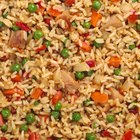
How to Cook Arroz Chaufa

How to Make Liquid Sugar Concentrate
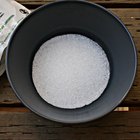
How to Make Xylitol Toothpaste

Restaurants on 50th - 52nd Street in ...

Uses for Major Grey's Chutney

Vietnamese Diet
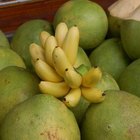
Foods From Rainforest Plants

Culinary Uses of Different Mint Herbs

What Type of Food Do People in Honduras ...
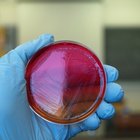
Uses of Saltpeter in Food

Bojangles Patio Red Cherry Soda ...
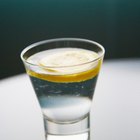
Tanqueray Gin Ingredients

What Is Accent Seasoning?
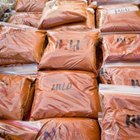
The Ingredients in Chipotle Sauce

How to Cut a Honey Mango
References
- The Cook’s Thesaurus: Vinegars
- Yummly: Sweet Sour Sauce Without Vinegar Recipes
- Food & Wine: Sweet-and-Sour Carrots
- The Spice House: Spices, Amchoor & Tamarind Paste
- Simply Tadka: Amchoor Chutney
- The Cook’s Thesaurus: Indian Spices
- Low Amine Recipes: Vinegar Substitute
- National Center for Home Food Preservation: General Canning Information
Resources
Writer Bio
Chloe Hughes has been writing about world cuisine since 2006. Her articles on classic and exotic foods, cooking classes, wine tastings, local restaurants and high-end gastronomy have been featured in regional magazines and on lifestyle websites.
Photo Credits
Jupiterimages/Stockbyte/Getty Images